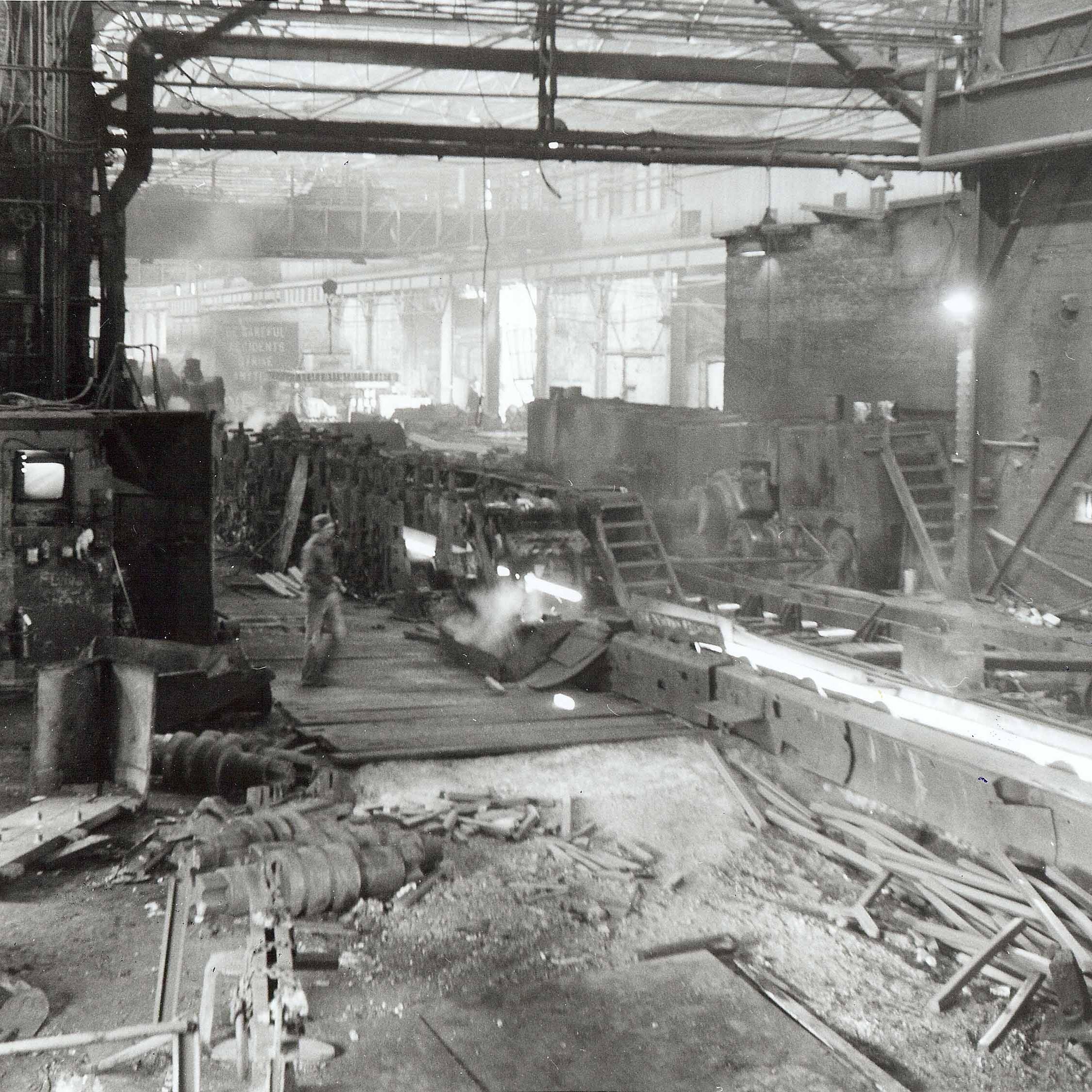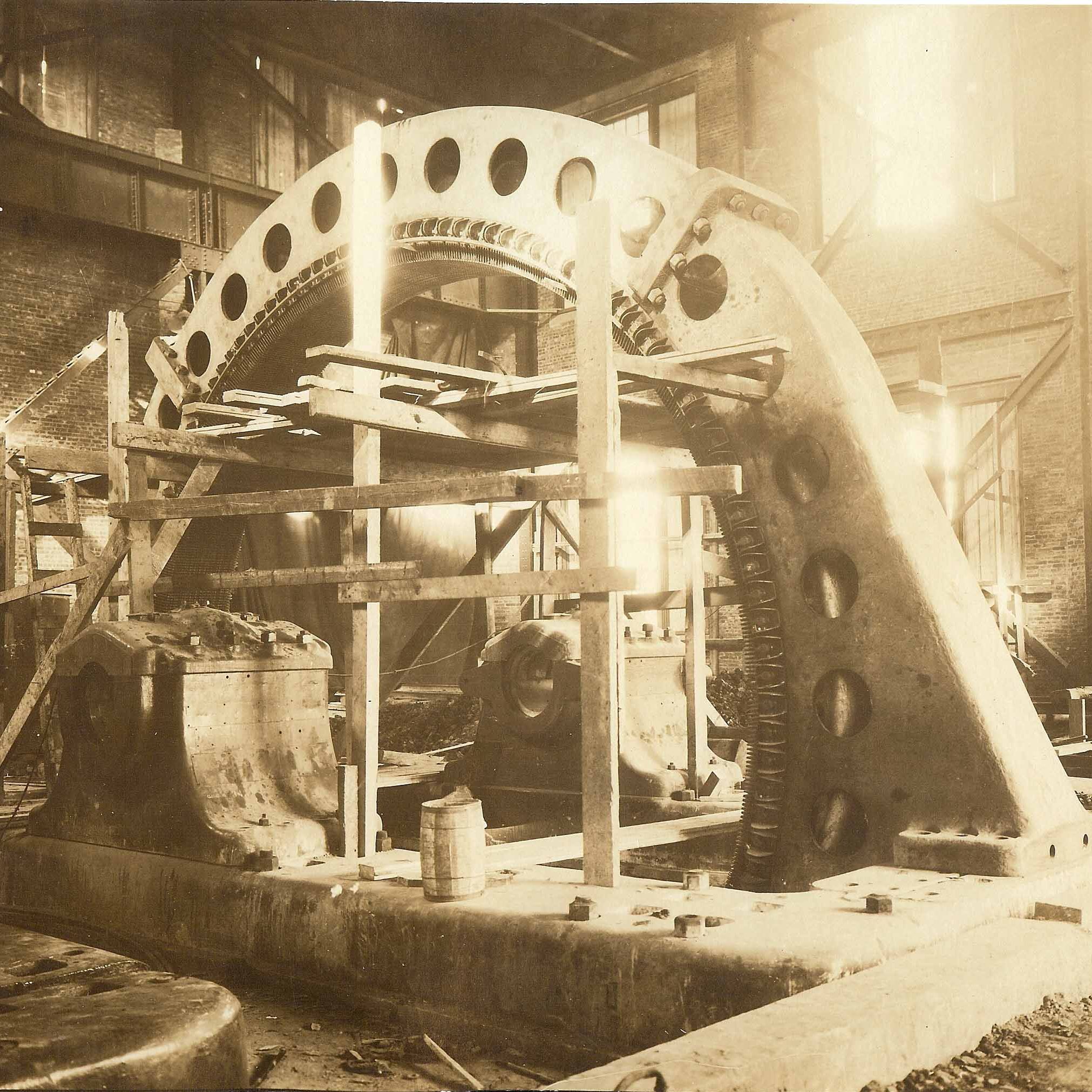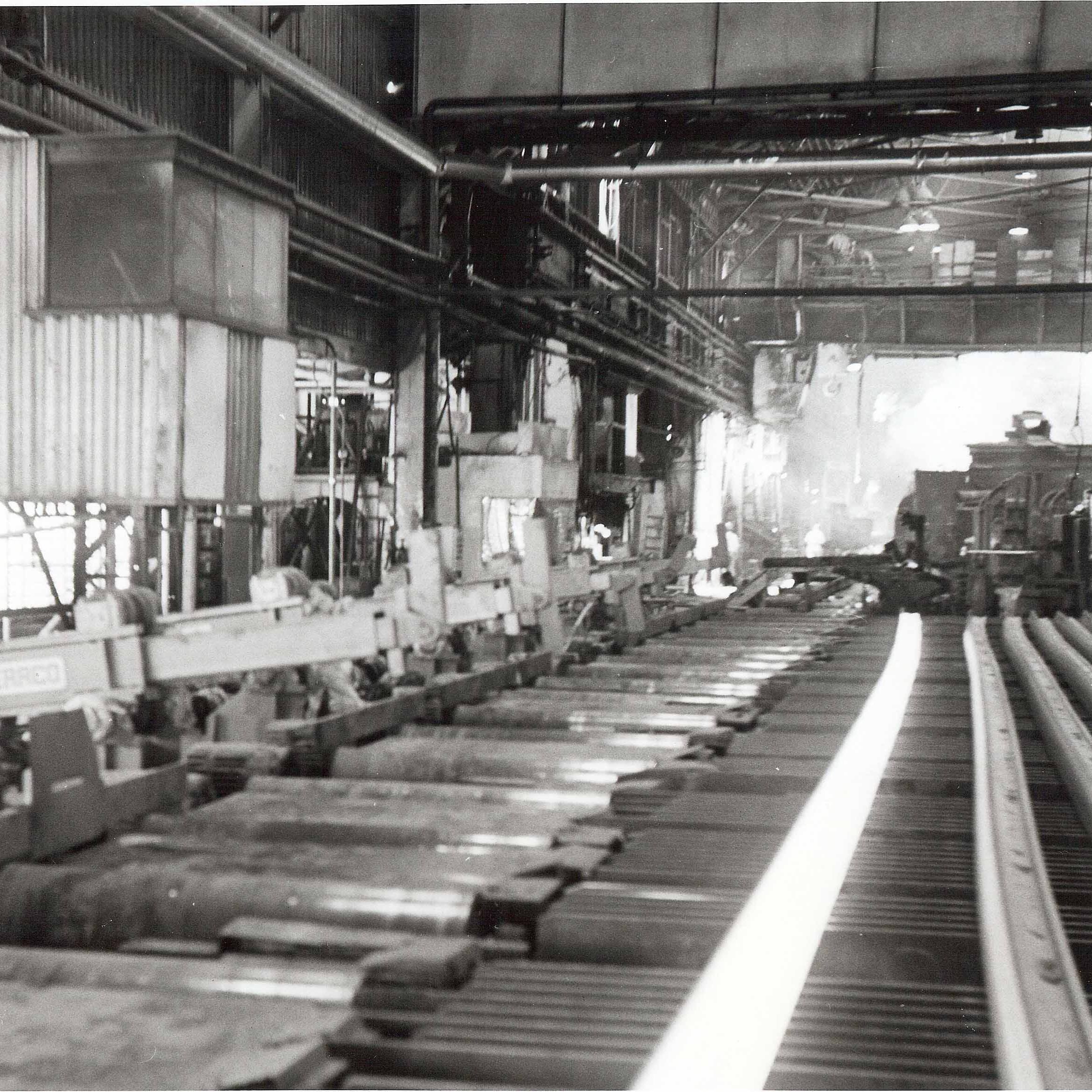Black Friday
written by Sid Slaven
October the 13th was a day that will go down in infamy in the history of Sydney Steel. Shock waves thundered throughout the industrial community when the owners of the Sydney steel plant, Hawker-Siddeley, announced the complete closure of the mill by April 30th, 1968. The totally unexpected development caught not only the steel community by surprise, but government leaders at all levels as well. In retrospect it was known that the plant was experiencing difficulties, but such drastic action dumbfounded the whole Cape Breton industrial community. It is important to go back ten years in history to put the event in its proper perspective.
In August of 1957 the huge conglomerate of England bases Hawker-Siddeley, purchased the assets of the Dosco Corporation, of which the flagship was the Sydney steel plant. At the time the Sydney plant was a profitable business employing 5200 workers and was heading towards a record-breaking production year. Rails were the main product, but a diversity of other steel products were also being manufactured, such as billets, wire, nails, bars, and rods. The announced purchase was met with a wave of optimism by the workers of even greater things to come.
However, just the opposite happened. By 1960 it was very apparent to steel plant employees that Hawker-Siddeley was only interested in making money, not steel. No capital investment was being made and when a department needed major repairs or refurbishing, it was closed or sold. Examples are the wire mill, which was closed, and the nail mill, which was sold to Dartmouth interests, where it operated profitably for the next 25 years.
By 1967 the sacking of the Sydney steel plant was complete. By now the workforce was reduced to 3200 employees. Hawker-Siddeley claimed it was suffering huge monthly losses and could no longer afford to operate the plant without modernizations. They wanted the Provincial Government to loan them millions and in return they would guarantee 25 years more years of operation. On October 2, Hawker-Siddeley approved a steel report, which recommended expansion and improvement of the steel plant.
Hawker-Siddeley had a change of attitude and announced that along with the coming closure, they were no longer interested in considering any proposals that would keep the Sydney plant operating. They planned to provide their basic steel needs from a plant at Contrecour Quebec. It is of note that this plant also closed a few years later with losses of over a billion dollars from money invested by the Quebec Government.
On October 14th, 1967, Cape Breton Post Publisher Roy Duchemin put the crisis in proper perspective. In an editorial he said the Sydney steelworkers stand as the victims of the biggest double-cross in Cape Breton industrial history. In only 10 years Hawker-Siddeley has wrought the destruction of the only basic steel plant in Eastern Canada. Hawker-Siddeley’s shocking decision transcends all bounds of decency and ethics, far unworthy of a responsible corporation.
The most shocked are the steelworkers themselves. They desperately plea with the Provincial Government to keep the plant operating beyond April 30th to lessen the blow of sudden closure. Premier G.I. Smith says his government is morally libel to operate the plan until a solution to the crisis can be found. Federal Labour Minister McKeough says that the Federal Government would like to see the mill operate on a reduced basis for a year or so.
The ideal solution, in the eyes of the Provincial Government, would be to find a new owner. Government officials met with the Steel. Company of Canada (Stelco) to discuss the possibility of them operating the Sydney plant. Also, Canadian Javelin Ltd., an iron ore mine operator, expressed an interest in the Sydney steel plant. Neither came to a successful conclusion as Stelco stated, they were not interested and it was felt that Canadian Javelin Ltd. did not have the expertise to operate a steel mill. Also, they did not want to put any of their own money into the plant takeover.
At a packed meeting on November 14th, steelworkers passed a resolution to back any government takeover with their own money. The share buying idea was compared to the wartime Victory Loan drives.
By November 15th, the battle to save the Sydney steel plant reached a crucial point amid agreements that will be readied to keep the mill operating until December 31st, 1968. Part of this agreement is that government would have to compensate Hawker-Siddeley for the plants assets and inventory. An unexpected blow was the disclosure that the Federal Government would not participate with the province in underwriting the cost of the mill operation beyond the closure date of April 30th, 1968.
Also, on this date, a “Parade of Concern” was being organized for Sunday, November 19th. Not only steelworkers and their families, but Canadian Legion Branches, United Mine Workers Local, women’s organizations, service clubs, students, clergy and professional groups all pledged their full cooperation. The parade was designed to focus attention on the steel crisis.
Looking back today from the year 2003, from a personal viewpoint, the events of November 19th, 1967 almost take on a surreal atmosphere. It had rained all morning, but just before the parade started at 1 pm, the skies cleared leaving a sunny, crisp, autumn day. 20,000 marchers gathered near the plant gate and the Sydney Shopping Centre to start the one-mile march up Prince Street to the Sydney Sports Centre. Thousands more lined the route.
This was the largest crowd ever assembled in Cape Breton and they staged a starkly dramatic and inspiring parade that struck all the chords of a community’s comradeship, hope and resolution. Cape Bretoners from all walks of life joined in the march. Students, steelworker’s families, coal miners, fishermen, doctors, clergymen, lawyers, the business community, teachers, nurses, all jointed the steelworkers themselves.
Perhaps the most inspiring marchers were our future, the babes in arms, along with people in wheelchairs and, the most inspiring to me, the steelworker with an artificial leg who, when offered a drive said: “I’ll die before I quit marching.” And, he successfully completed the whole route.
It took an hour for the marchers to file into the muddy field and racetrack of the Sydney Sports Centre. The main speakers were to be provincial and federal politicians but, before this, an inspiring event took place. A local balladeer and steelworker, Charlie MacKinnon, had written a song for the occasion, “Let’s Save Our Industry.” There was not a dry eye in the crowd by the time this pleading song from a proud and strong people was finished.
Both speakers had been noticeable affected by the emotion of the march and the song. Premier G.I. Smith and Federal Minister Allen MacEachen both spoke with quivers in their voices along with long pauses to get their emotions in check before continuing on. The message they both delivered was that both levels of government were committed to keeping the plant operating beyond the April 30th closing date until a solution could be found.
Tough bargaining continued on November 20th between Hawker-Siddeley and the Provincial Government. Hawker-Siddeley was driving an extremely hard bargain for a higher price for the assets then province was then willing to pay. Finally, in a key move, Provincial Government auditors revealed that the plant’s monthly losses were only a small fraction of the $1,000,000 per month they claimed. Hawker-Siddeley was then told to become more cooperative or face provincial expropriation proceedings. On November 21st, 1968, Hawker-Siddeley returned to negotiations with a changed attitude of full cooperation.
Premier G.I. Smith announced on November 22nd, 1967, that as of January 1st, 1968, the Sydney steel plant would become a full crown corporation under the ownership of the Nova Scotia Government and henceforth would be known as the Sydney Steel Corporation, (SYSCO). The price of the takeover would be determined by an independent group of steel experts. Premier Smith also stated that the plant would be fully modernized as soon as possible.
Thus ended the crisis of October the 13th of 1967, the day that became known as “Black Friday.” The Nova Scotia Government went on to operate the Sydney Steel Corporation for 32 years until its closure in the year 2002.
What was the decisive factor in saving the Sydney plant in 1967? No doubt it was the Parade of Concern and the effect it had on the government officials. Along with the community, they were caught up in the emotional experience of a hardworking, proud, and strong people’s desire to save the Cape Breton industrial community.
Author’s note: Many of the chronological events were drawn from a five-week period of the Cape Breton Post. Both the editor, Ian MacNeil, and the publisher, Roy Duchemin, demonstrated remarkable skills in the field of responsible journalism. Also, a large part of the events come from my own personal memories and those of my fellow steelworkers.


